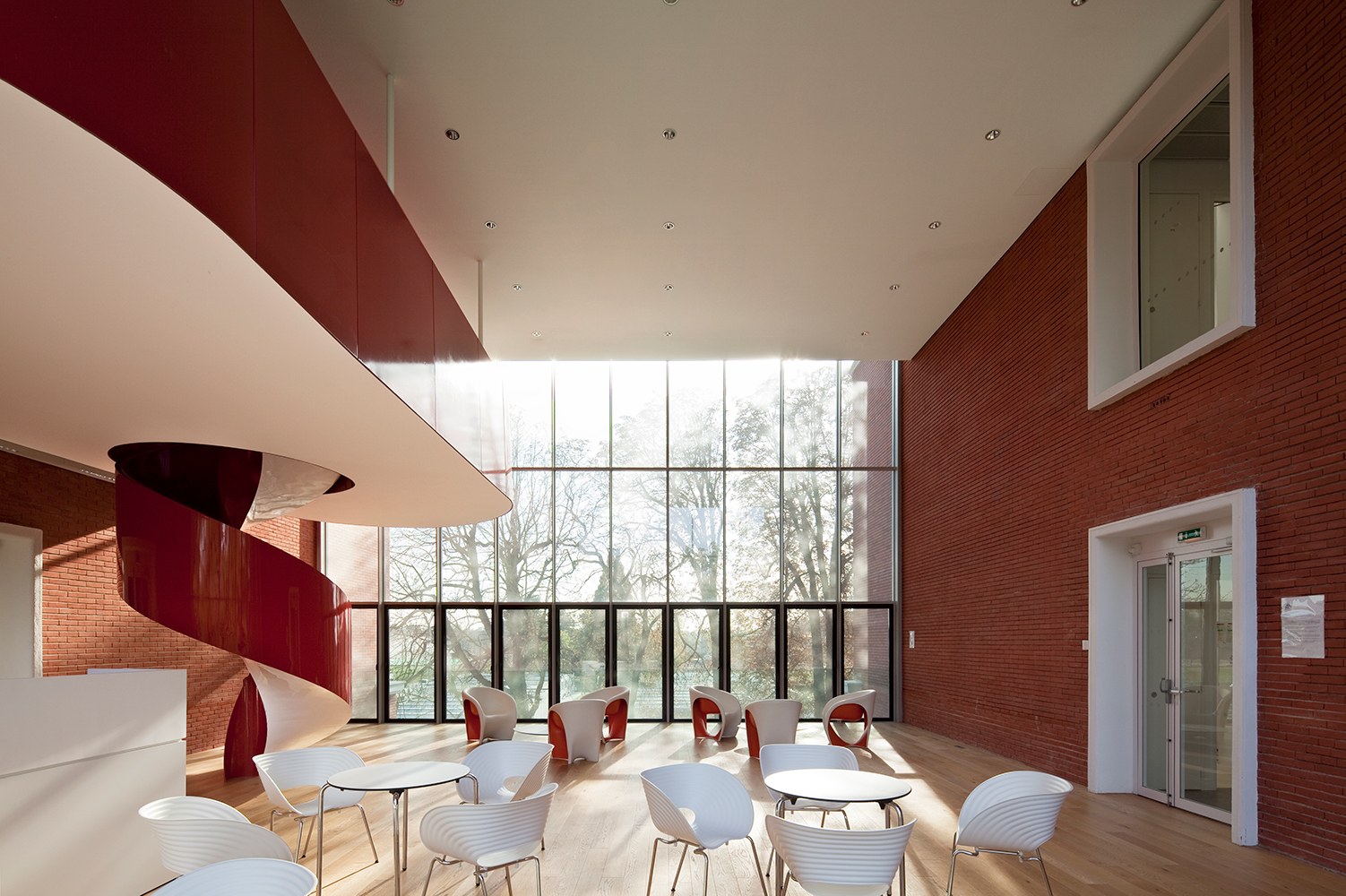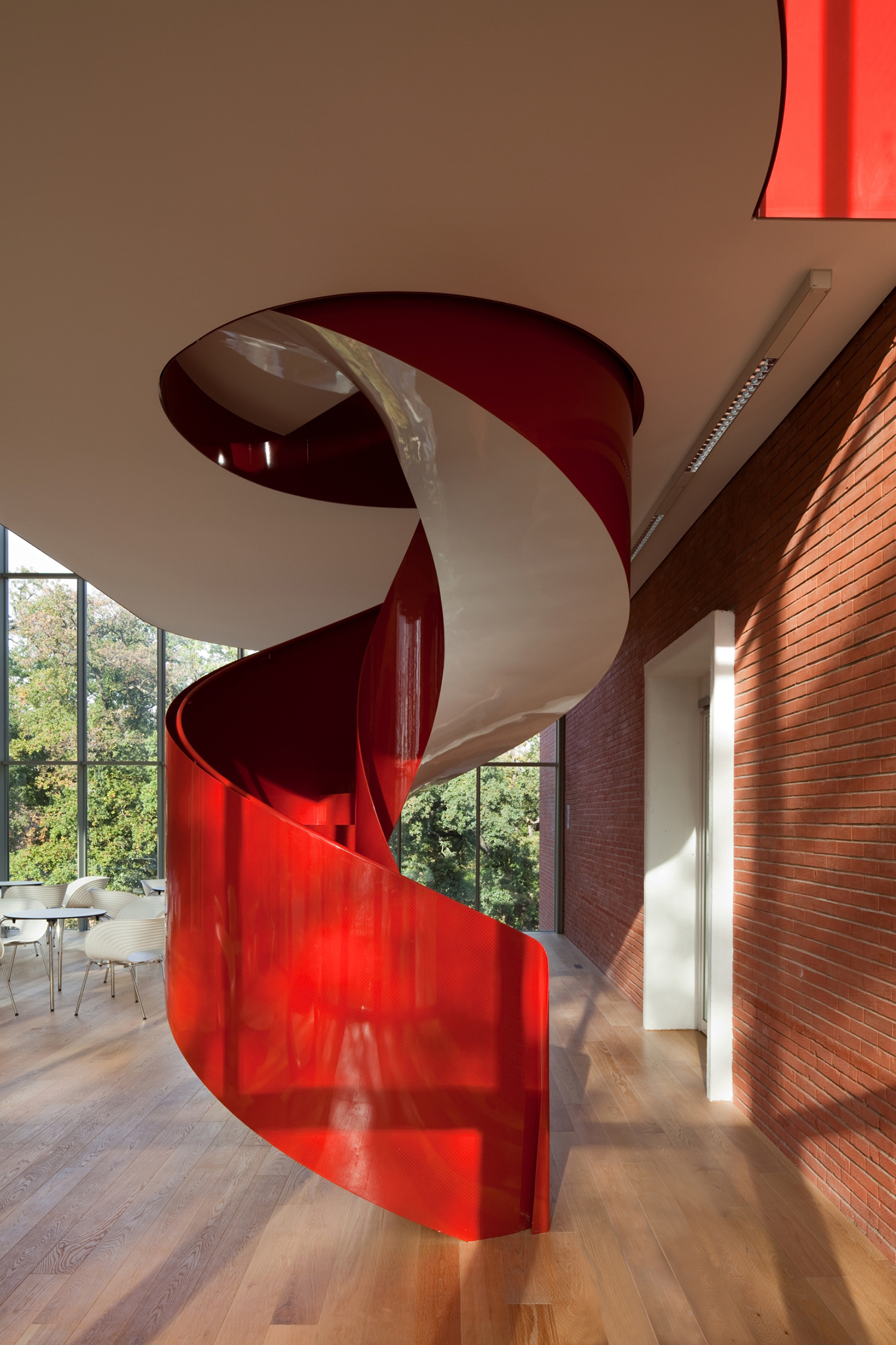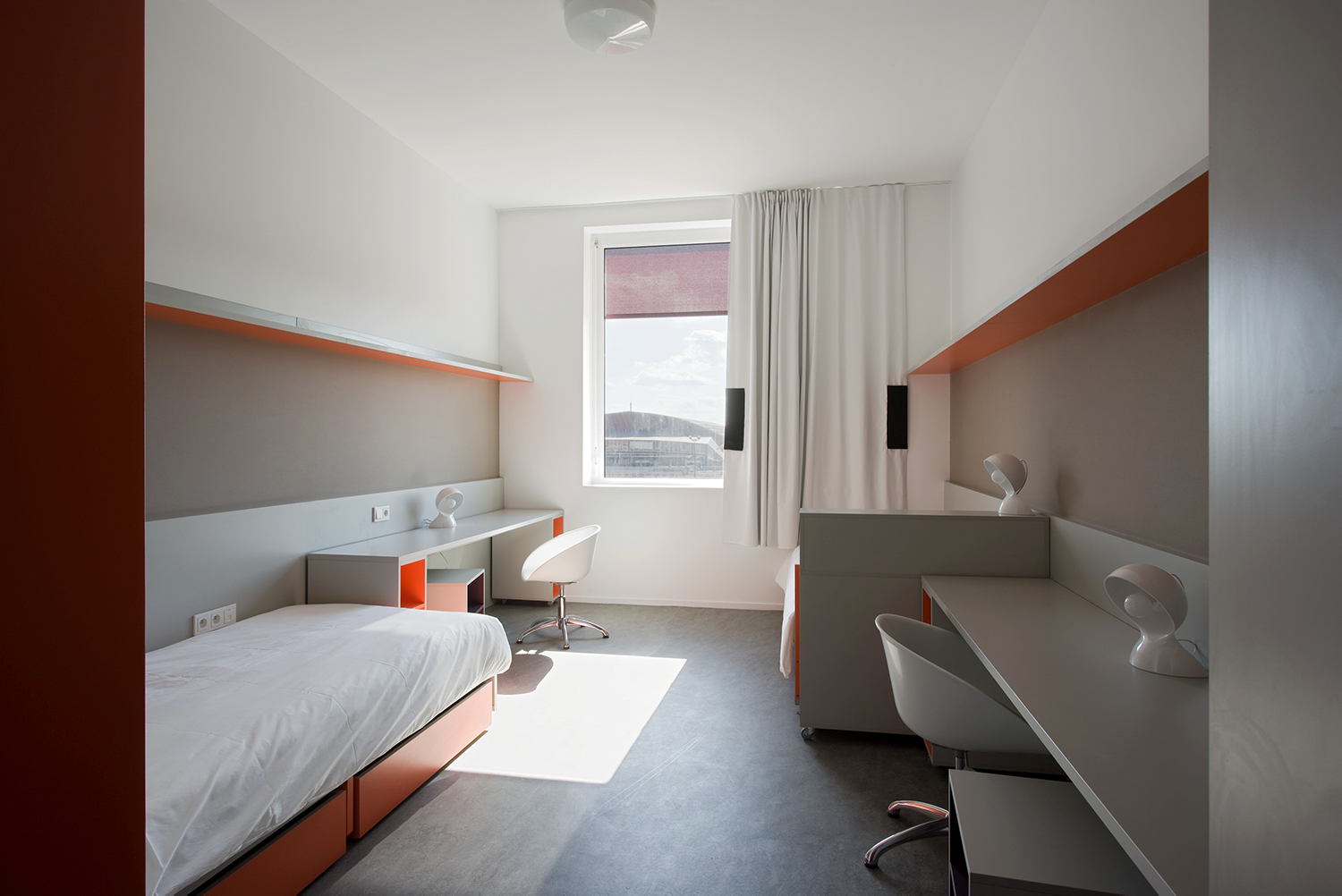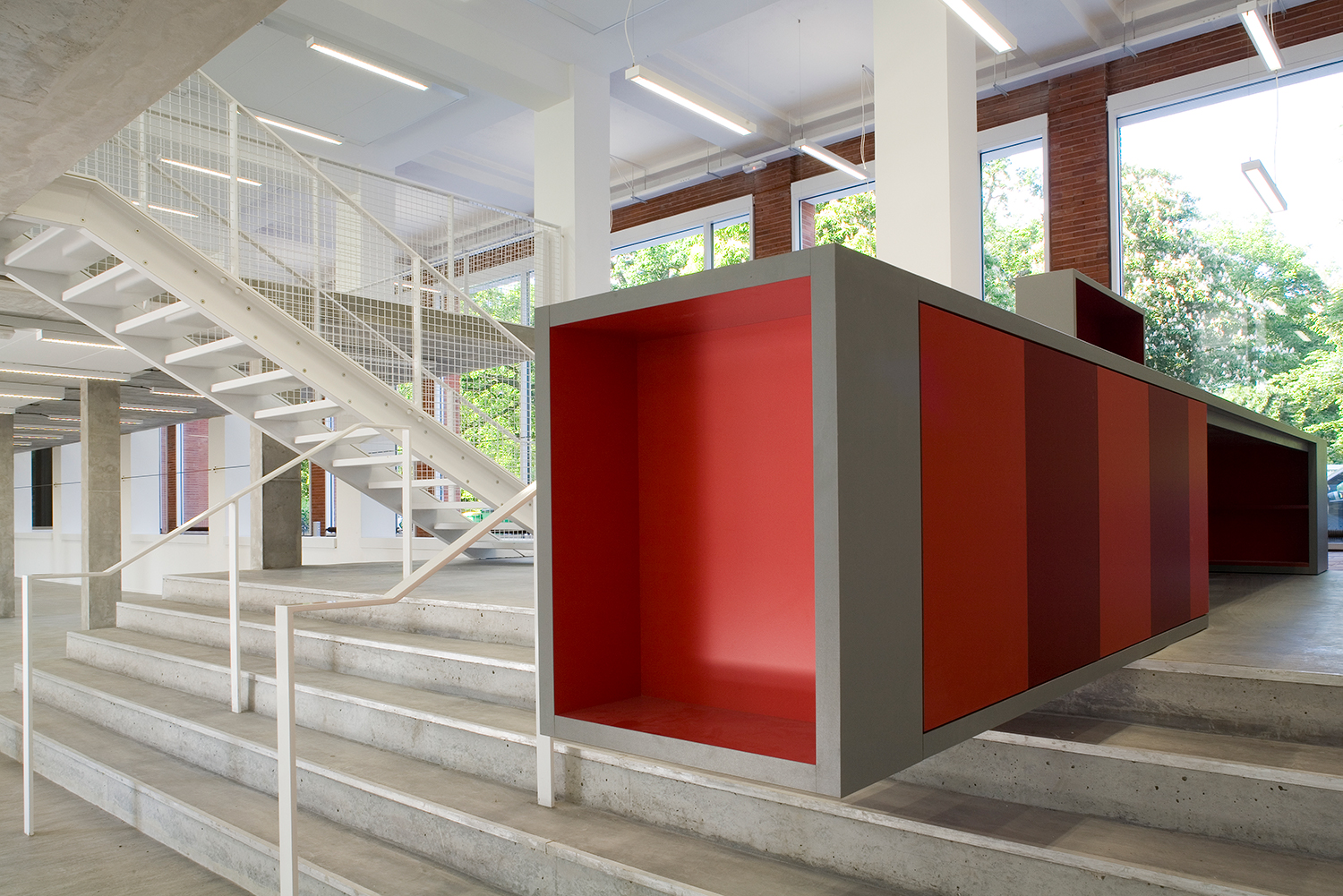INSEP University housing – Paris, France
INSEP University housing
Paris, France
Client
Ministère de la Jeunesse et des Sports
Team
BARTHELEMY GRINO : Architect
FRANCK NEAU : Landscape architect
CEBA / BA2E : Structural engineer
CTH : Services engineer
SLH : Sustainibility engineer
Mission
Complete services
Nature
Refurbishment and extension
Program
14 buildings on the INSEP campus, a listed site (63 classrooms, lecture theatre, daycare centre, audiovisual centre, medical and paramedical centre, 504 accommodation units, media library, administration offices, restaurant, etc.)
Status
Completed
Year
2011
Cost
60 M€ HT
Area
45 000 m²
Specifications
HQE®
Solar panels (ECS)
Rainwater collection
Wood boiler room
The history of the Bois de Vincennes is closely linked to sport. In the 19th century, it was the site of a manoeuvring ground for the infantry. This was followed by a succession of national gymnastics and physical education schools, until the current INSEP was set up in the early 1940s. André Malraux classified the natural site in 1960.
Given the dilapidated state of the campus, a comprehensive restructuring plan was launched in 2004. The northern part of the campus, covering an area of 9 hectares, houses 14 buildings that provide living and training facilities for top-level athletes. The mismatch between the INSEP’s ambitions and its resources became the breeding ground for a vast project, orchestrated in three acts and on an occupied site. Architecturally, the existing building is typical of the inter-war period, combining a reinforced concrete frame with a brick infill. In addition to the restoration work, major renovation, extension and conversion work have been carried out, within the strict framework imposed by town planning easements.
Excavation and heightening, combined with the demolition of appendages, have made it possible to designate new, significant and generous surfaces, which have become home to a number of crucial functions such as accommodation, teaching, physical preparation, medical, paramedical and audiovisual centres, and an amphitheatre. The site’s potential and its innovative character are revealed through a profusion of glass façades. In terms of landscaping, the place of nature has been enhanced by the planting of three hundred tall trees and the creation of large meadows. This restructuring and the facilities created give the INSEP new uses, in keeping with its educational and scientific objectives.



